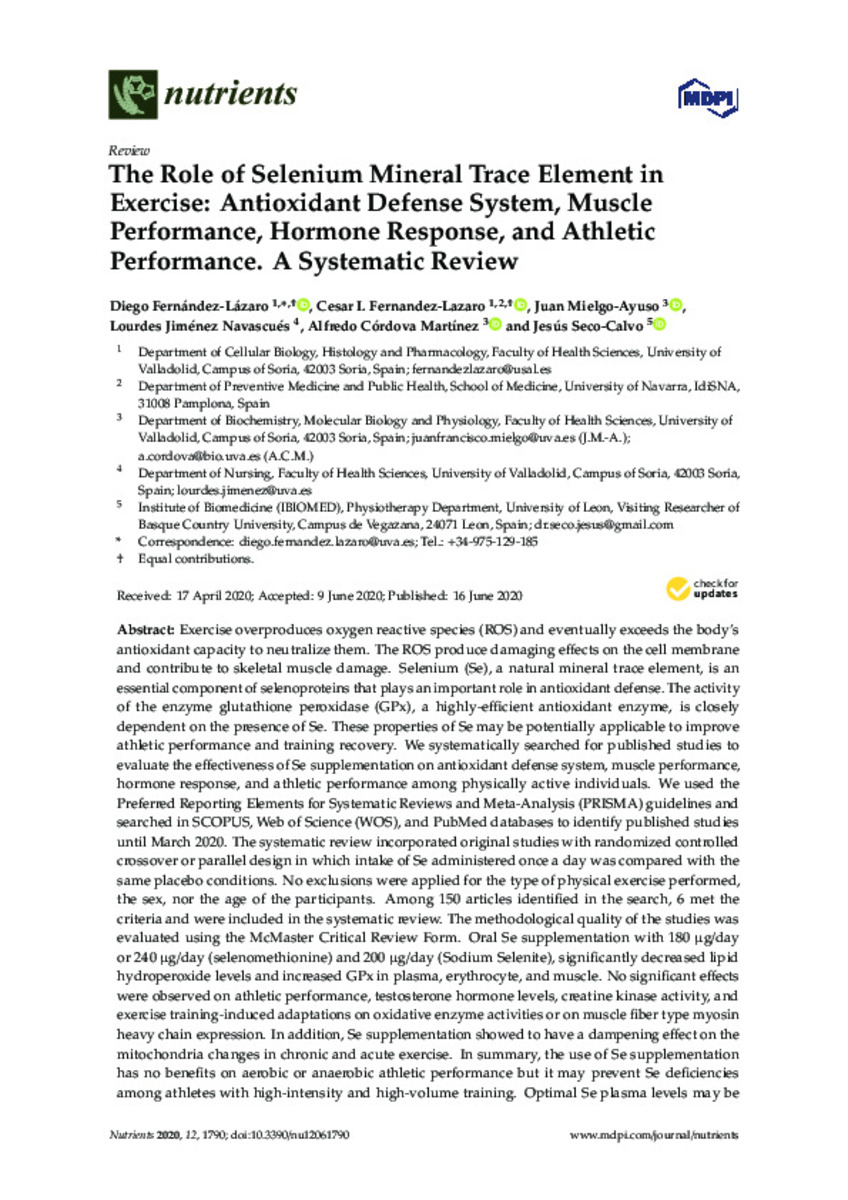The role of selenium mineral trace element in exercise: antioxidant defense system, muscle performance, hormone response, and athletic performance. A systematic review
Keywords:
Mineral trace element
Selenium
Exercise
Antioxidants
Muscle
Hormone response
Athletic performance
Note:
This article is an open access
article distributed under the terms and conditions of the Creative Commons Attribution
(CC BY) license (http://creativecommons.org/licenses/by/4.0/).
Citation:
Fernández-Lázaro, D. (Diego); Fernández-Lázaro, C.I. (César I.); Mielgo-Ayuso, J. (Juan); et al. "The role of selenium mineral trace element in exercise: antioxidant defense system, muscle performance, hormone response, and athletic performance. A systematic review". Nutrients. 12 (6), 2020, 1790
Statistics and impact
0 citas en

0 citas en

Items in Dadun are protected by copyright, with all rights reserved, unless otherwise indicated.







